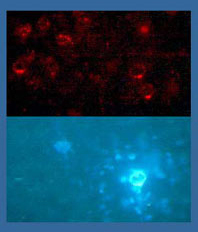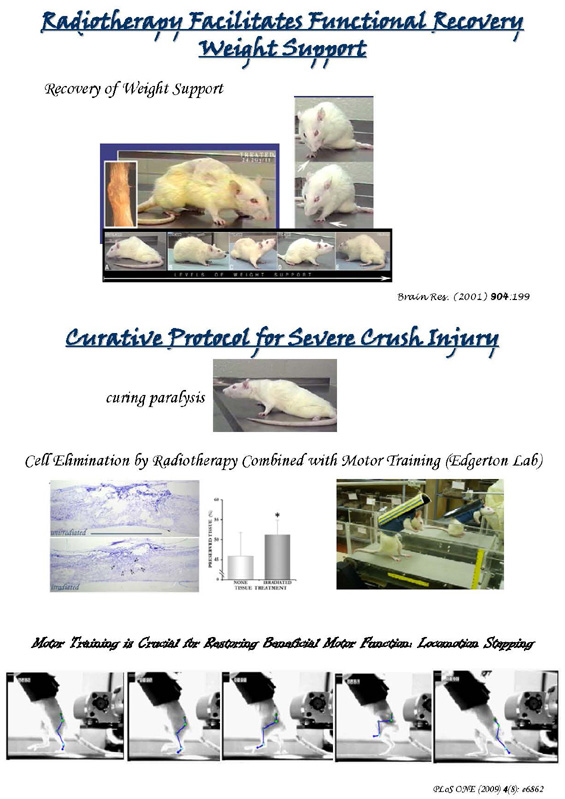|
|
 |
![]()

THE PROMISING RESEARCH TO CURE PARALYSIS

I am Nurit Kalderon, Ph.D., a neuroscientist conducting research on the cellular response and mechanisms following injury to the spinal cord. Based on this research, I had developed promising therapies for the treatment of spinal cord injury. Since August 2000 I have been the principal investigator on a National Institutes of Health (NIH) grant, R01 NS039375, that was awarded to me to continue and develop these therapies for clinical trials. The funded project yielded an effective treatment that has been ready for potential testing in clinical trials since early 2007.
The Grant and the Investigator-Initiated Research Project to Cure Paralysis
The funded research project is based on my fundamental discovery that the spinal cord is able to repair itself in the early days after injury but is thwarted in its efforts during the second or third week by certain cells that block the repair process. Using this discovery, we developed [1] in laboratory animals an effective procedure to treat spinal cord injury based on the simple principle that if one specifically targets and eliminates these intrusive cells —applying clinical radiation therapy as commonly used to eliminate tumor cells— one can maintain the natural injury repair processes as they function in any other tissue.
Results under the funded project yielded an effective treatment for severe crush spinal cord injury — similar to a human contusion/fracture injury— leading to significant repair and motor recovery —restoration of standing and stepping capacities. This treatment has been ready for testing in clinical trials since 2007. It combines the use of three conventional clinical procedures: microsurgery, radiotherapy and motor training. First, to achieve permanent wound repair the treatment combines microsurgery to drain excess fluids due to massive hemorrhage and radiotherapy to destroy harmful cells. Second, it was demonstrated [2] that training/rehabilitation is crucial for restoring beneficial motor function following radiotherapy.
Further, I was issued a US Patent entitled "Beta Interferon for the Treatment of Chronic Spinal Cord Injury." This treatment was developed for chronic spinal cord injury intended to prevent the chronic inflammation and demyelination pathologies by adapting an already established clinical procedure —the use of beta interferon— for the treatment of similar pathologies in multiple sclerosis. Again, this procedure has been almost ready for testing in clinical trials since 2006.
This promising funded research was stopped dead in its tracks by several NIH grant administrators who —in early 2006— instead of transferring to a new institution misused and diverted my NIH grant's funds into unauthorized purposes. Consequently, since April 2006 —for no good reason— I do not have access to my grant's funds, my research projects were discontinued and scientific career has been decimated.
![]()
[1] These studies were published in 1996 in the Proc. Acad. Natl. Sci., USA, showing that radiation therapy if used within a critical period after injury can facilitate wound repair, regrowth of the severed brain-cord fibers across the lesion site, and some motor functional recovery in spinal cord transection injury. These papers received wide media coverage, e.g., Wall Street Journal, Scientific American, etc.
[2] A collaborative study with the laboratory of Dr. Reggie Edgerton at UCLA.
